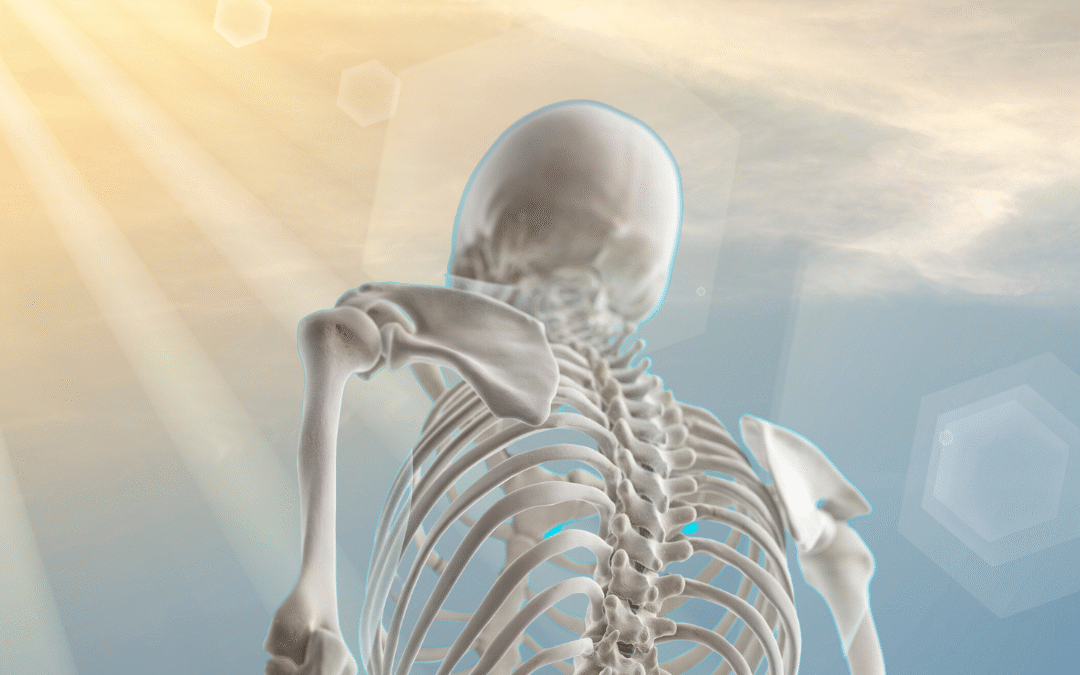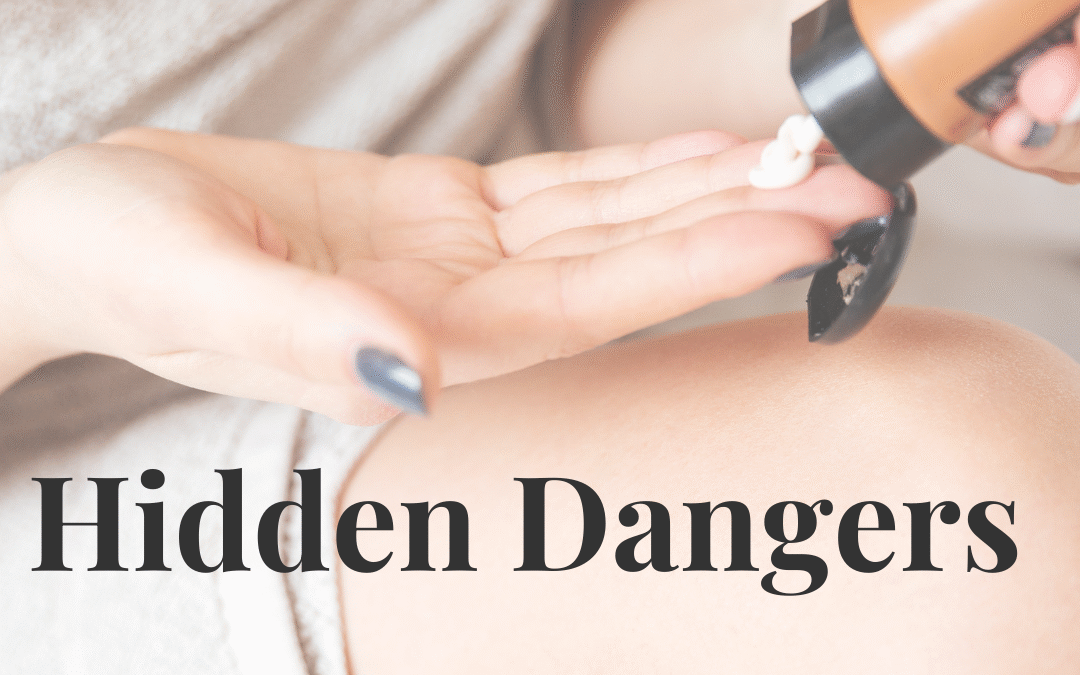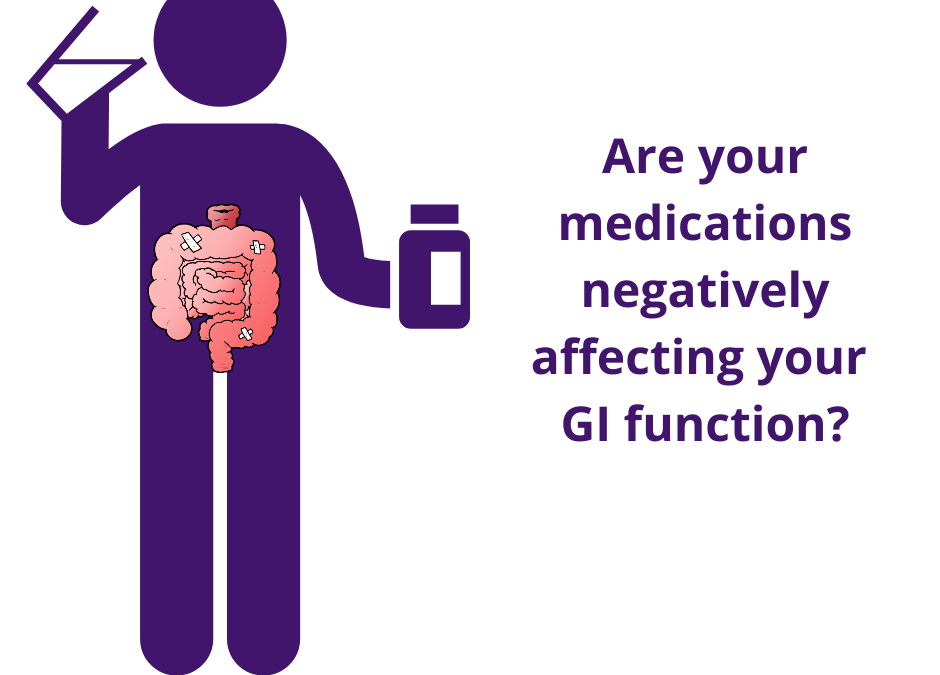
Vitamin D and Osteoporosis: What You Need to Know for Stronger Bones
I’m heading to Florida this week, eager to escape the cold and soak up some much-needed sunshine. There’s nothing like getting natural vitamin D straight from the source! While I prefer to get my nutrients the way nature intended—through food and sunlight—vitamin D supplements still play an essential role, especially for bone health.

Why Vitamin D Matters for Bone Health
Vitamin D is often hailed as a critical nutrient for bone health, and for a good reason. It helps your body absorb calcium and phosphorus, two key minerals that strengthen bones and reduce fracture risk. Without enough vitamin D, bones can become weak, brittle, and more prone to breaks.
Vitamin D also supports muscle strength and immune function and reduces inflammation, all of which support bone health.
Yet, despite its importance, nearly 40% of the U.S. population is deficient in vitamin D. This is especially true during the winter months when sun exposure is limited. Even when we do go outside, air pollution, sunscreen, and protective clothing block UV rays, further reducing our body’s ability to produce vitamin D naturally.
Just Taking a Vitamin D Supplement Isn’t Enough
Many people assume that taking a vitamin D supplement is all they need to do for bone health, but that’s not the case. Vitamin D needs several key cofactors to be properly absorbed and utilized in the body.
Vitamin D Can’t Work Alone—What Else Do You Need?
For vitamin D to be fully effective, your body requires essential cofactors that support its absorption, activation, and utilization:
- Magnesium – Activates the enzymes needed to convert vitamin D into its usable form. Without enough magnesium, vitamin D may remain inactive and stored in fat cells. Magnesium also regulates calcium balance and supports bone formation.
- Vitamin K2 – Works synergistically with vitamin D in calcium metabolism. While vitamin D enhances calcium absorption, K2 directs calcium to the bones and prevents it from accumulating in soft tissues like arteries.
- Zinc – Supports vitamin D receptor function, which is critical for vitamin D’s ability to regulate cellular activities.
- Boron – Enhances vitamin D bioavailability, increases magnesium absorption, and plays a role in bone health and mineral metabolism.
- Omega-3 Fatty Acids – Since vitamin D is fat-soluble, consuming it with healthy fats (such as omega-3s) improves absorption and enhances overall bone and immune health.
Your Body’s Ability to Use Vitamin D Also Depends On:
- A Healthy Liver & Kidneys – Vitamin D must be converted in the liver and kidneys before the body can use it. Poor liver or kidney function can impair vitamin D metabolism.
- Gut Health – A healthy microbiome plays a key role in vitamin D absorption. Digestive issues like leaky gut, celiac disease, or an imbalanced gut microbiome can interfere with how well your body absorbs and utilizes vitamin D.
Can You Take Too Much Vitamin D?
Yes! More vitamin D isn’t always better. High doses can lead to hypercalcemia, a condition where calcium builds up in the bloodstream, increasing the risk of kidney stones, bone pain, and even weakening bones over time.
A study published on August 27, 2019, in the issue of JAMA, examined the effects of vitamin D supplementation on bone health. This randomized clinical trial compared different daily doses of 400 IU, 4,000 IU, and 10,000 IU on total bone mineral density and bone strength over a three-year period in 311 healthy adults aged 55 to 70. The results were eye-opening:
- Higher doses of vitamin D did not improve bone health compared to lower doses.
- Higher doses (4,000 IU and 10,000 IU) actually led to a decrease in bone mineral density compared to the 400 IU dose.
- These findings challenge the common belief that more vitamin D equals stronger bones.
This study highlights that more is not always better when it comes to vitamin D supplementation. While vitamin D is essential, taking excessive amounts can actually be harmful to bone health.
Want to Learn More About Vitamin D and Overall Health?
If you’re interested in learning more about how vitamin D affects the body beyond bone health, I highly recommend checking out Dr. Sten Ekberg’s YouTube channel. He provides an excellent breakdown of vitamin D’s role in multiple body systems, complementing my focus on vitamin D for bone health.
The Best Vitamin D Test: Why Testing Matters
To ensure you’re getting the right amount of vitamin D—neither too little nor too much—testing is critical. The best vitamin D test is the 25-hydroxy vitamin D test (25(OH)D test). This test is considered the most accurate because it measures the circulating form of vitamin D that your body actively uses.
While experts debate the optimal vitamin D levels, I align with many of the functional medicine experts in believing that 50- 80 ng/mL
Are You Taking Supplements Blindly?
Many people take supplements without really knowing if they’re helping or harming their health. Maybe you started taking one because you heard it was good for bone health, a friend swears by it, or an ad promised amazing benefits. But without the right knowledge, testing, and balance, supplements can do more harm than good.
Before adding or increasing supplements, ask yourself:
Are my supplements actually helping my body?
- Have you noticed positive changes, or are you just taking them out of habit?
- Are they improving your bone health, energy levels, digestion, or other key functions?
- Have you checked to see if your supplements are high quality and free from unnecessary fillers?
Am I taking the right combination of nutrients to ensure they work properly?
- Certain nutrients work together, while others can interfere with absorption.
- For example, vitamin D needs vitamin K2 and magnesium to function properly. Without them, calcium may build up in soft tissues instead of strengthening bones.
- Are you getting the right balance of cofactors to support your bone and overall health?
Could I be overloading my system with unnecessary supplements that may be harmful?
- Just because a supplement is “natural” doesn’t mean it’s always safe in high doses.
- More is not always better—taking excessive amounts of one nutrient can actually lead to imbalances and even health risks.
Get a Personalized Supplement Review
If you’re not sure whether your supplement routine is helping or hurting you, I can help! My Supplement Review takes a deep dive into your supplement regimen to ensure you’re getting exactly what your body needs—no more, no less.
- Analyze your current supplements to identify what’s working and what’s not.
- Ensure you’re not overloading on vitamins that could be harmful.
- Make expert recommendations to optimize your bone and overall health.
- Save you money by eliminating unnecessary supplements you don’t actually need.
Special Offer for National Nutrition Month!
In honor of National Nutrition Month, I’m offering my Supplement Review at 20% off for two weeks—March 17-28. Usually $99, for these 2 weeks only, the cost is $79!
This is the perfect opportunity to optimize your supplement routine and ensure you’re only taking what truly benefits your health.







